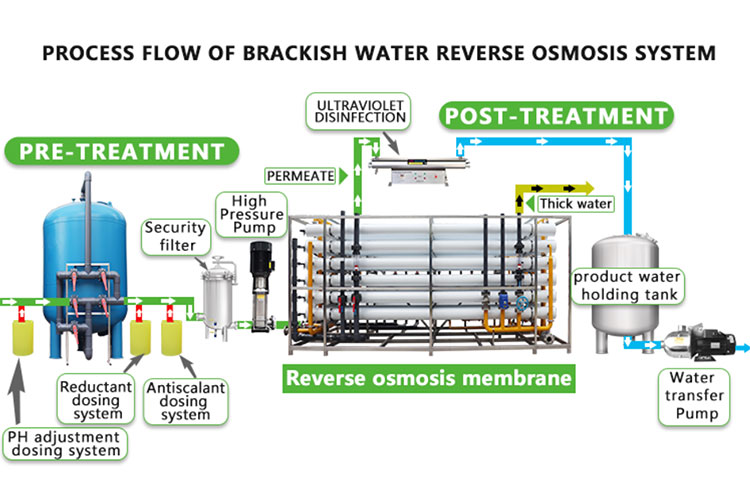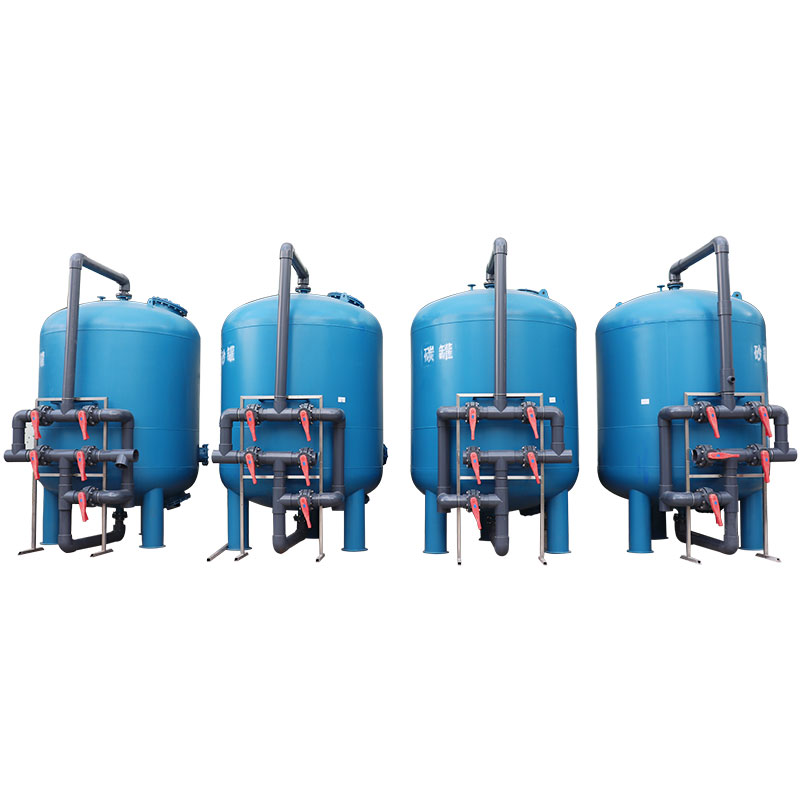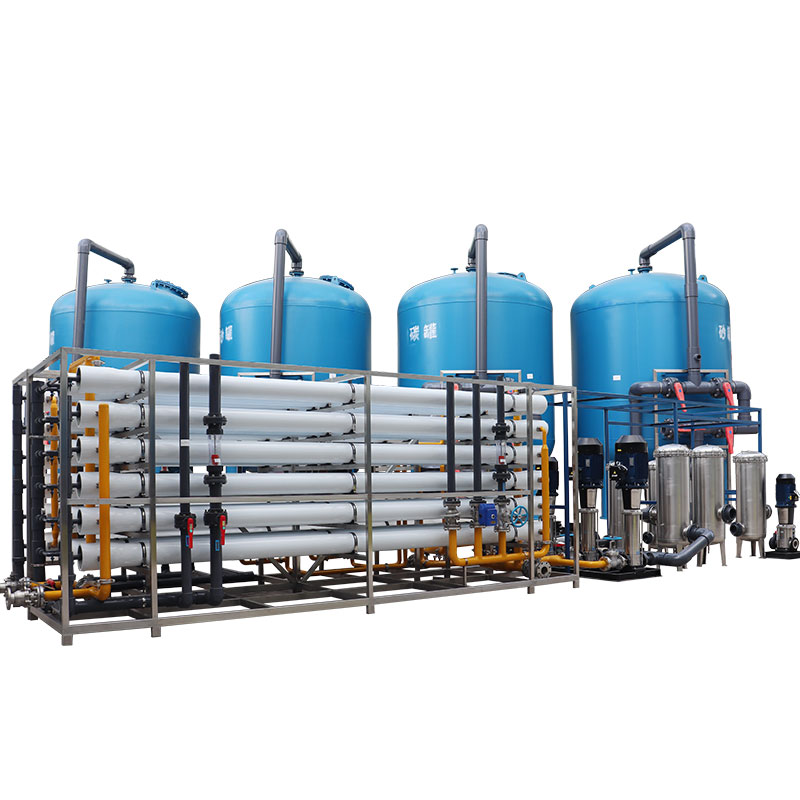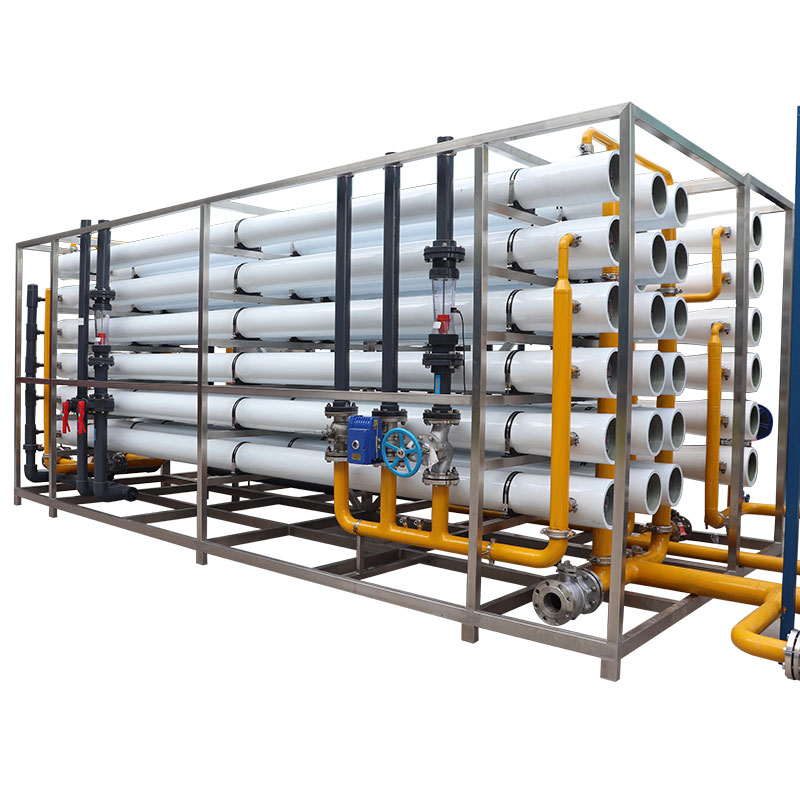What are the main types of water treatment plants?
In modern society, water treatment plants play a vital role in ensuring water security and public health. There are many types of water treatment plants, which can be roughly divided into several categories according to their functions and treatment objectives: drinking water treatment plants, sewage treatment plants, industrial water treatment plants and seawater desalination plants.
This article will introduce these main types of water treatment plants and their respective treatment processes and characteristics in detail.

Drinking Water Treatment Plants
The main task of drinking water treatment plants is to treat natural water sources (such as rivers, lakes, groundwater, etc.) into safe water that meets drinking standards. The treatment process usually includes the following steps:
1. Coagulation and flocculation: In the coagulation and flocculation stage, chemical agents (such as alum, iron salts) are added to the water to promote the aggregation of small particles into larger flocs. This process helps to remove suspended matter and turbidity in the water.
2. Sedimentation: The flocs settle in the sedimentation tank to form sludge and are removed. This step greatly reduces the solid content in the water.
3. Filtration: The settled water passes through a sand filter or other type of filter to further remove residual microscopic particles. This step ensures the clarity of the water.
4. Disinfection: The filtered water needs to be disinfected to kill residual pathogenic microorganisms. Common disinfection methods include chlorination, ozone treatment, and ultraviolet disinfection.
● Application example: The water treatment plant of Beijing Water Group treats a large amount of surface water and groundwater every day to provide safe drinking water for Beijing citizens.

Sewage treatment plant
The purpose of a sewage treatment plant is to treat urban and industrial wastewater into water that meets discharge standards and reduces pollution to the environment. Sewage treatment is usually divided into the following stages:
1. Pretreatment: The pretreatment stage includes steps such as screening, sand settling, and grease separation to remove large particulate matter and grease from sewage.
2. Primary treatment: In the primary treatment stage, sewage passes through a primary sedimentation tank, where suspended solids and organic matter are removed to form primary sludge.
3. Secondary treatment: Secondary treatment is the biological treatment stage, which uses microorganisms to decompose organic pollutants in sewage through processes such as activated sludge, trickling filters or biofilm reactors.
4. Tertiary treatment: Tertiary treatment is used to further remove nitrogen, phosphorus and other pollutants, usually using technologies such as chemical precipitation, filtration and activated carbon adsorption.
5. Disinfection: Finally, the treated sewage needs to be disinfected to ensure that the discharged water does not contain harmful pathogenic microorganisms.
● Application example: Shanghai's Bailonggang Wastewater Treatment Plant is one of the largest sewage treatment plants in China, with a daily sewage treatment capacity of 2 million cubic meters, effectively protecting the water quality of the Huangpu River.
Industrial Water Treatment Plant
Industrial water treatment plants are mainly used to treat various industrial wastewaters to meet discharge standards or reuse standards. The composition of different industrial wastewaters varies greatly, so the treatment methods are also different. Common industrial water treatment methods include:
1. Physical treatment: Physical treatment methods include filtration, sedimentation and flotation, which are used to remove suspended solids and grease in wastewater.
2. Chemical treatment: Chemical treatment methods include neutralization, redox and chemical precipitation, etc., which are used to remove heavy metals, inorganic salts and other harmful chemicals from wastewater.
3. Biological treatment: Biological treatment methods include activated sludge method, biofilter and anaerobic digestion, etc., which are used to decompose organic pollutants in wastewater.
4. Membrane treatment: Membrane treatment technologies include microfiltration, ultrafiltration, nanofiltration and reverse osmosis, etc., which are used to deeply purify wastewater and remove tiny particles and soluble substances.
● Application example: A chemical company in Shandong Province uses advanced membrane treatment technology and biological treatment processes to effectively remove toxic and harmful substances generated during the production process, and achieve wastewater reuse and zero discharge.
Desalination plant
Desalination plants remove salt and other minerals from seawater and convert it into fresh water that can be used for drinking or industry. The main methods of desalination include distillation and reverse osmosis.
1. Distillation: Distillation uses heated seawater to evaporate it into water vapor, which is then condensed into fresh water. This method can effectively remove salt and other dissolved substances in seawater, but it consumes a lot of energy.
2. Reverse Osmosis: Reverse osmosis uses high pressure to pass seawater through a semipermeable membrane. Salts and other dissolved substances are trapped on one side of the membrane, while fresh water passes through the other side of the membrane. Reverse osmosis has low energy consumption and is simple to operate, so it is widely used.
● Application example: The Ras Tanura Desalination Plant in Saudi Arabia is one of the largest desalination plants in the world, producing more than 1 million cubic meters of fresh water per day, providing a reliable water source for local residents and industries.

Integrated water treatment plant
Integrated water treatment plants combine multiple treatment processes to treat various types of water quality. This type of water treatment plant is usually used to treat wastewater with complex water quality and a variety of pollutants. It is common in large industrial parks and urban sewage treatment systems.
1. Physical treatment: Integrated water treatment plants use physical methods such as screening, sand settling and filtration to initially remove suspended matter and large particles from wastewater.
2. Chemical treatment: Heavy metals, inorganic salts and harmful chemicals are removed from wastewater through chemical methods such as neutralization, coagulation and oxidation-reduction.
3. Biological treatment: Use biological methods such as activated sludge, anaerobic digestion and biofilter to further decompose organic pollutants in wastewater.
4. Advanced treatment: Including membrane treatment technology, activated carbon adsorption and ion exchange methods to deeply purify wastewater to meet higher treatment standards.
● Application example: The comprehensive water treatment plant in Yizhuang Economic and Technological Development Zone, Beijing, adopts a variety of advanced treatment processes to treat various types of industrial wastewater and domestic sewage in the area, ensuring that the discharged water quality meets strict environmental protection standards.

Conclusion on the types of water treatment plants
The main types of water treatment plants are:
1. Drinking water treatment plants,
2. Sewage treatment plants,
3. Industrial water treatment plants,
4. Seawater desalination plants.
There are many types of water treatment plants, and different types of water treatment plants use different treatment processes and technologies for different water quality and treatment requirements.
Drinking water treatment plants mainly ensure water quality safety, sewage treatment plants focus on pollutant removal and environmental protection, industrial water treatment plants deal with complex wastewater components, and seawater desalination plants solve the problem of scarce freshwater resources.
By understanding these different types of water treatment plants and how they work, we can better understand the important role water treatment plays in protecting the environment and safeguarding public health.




